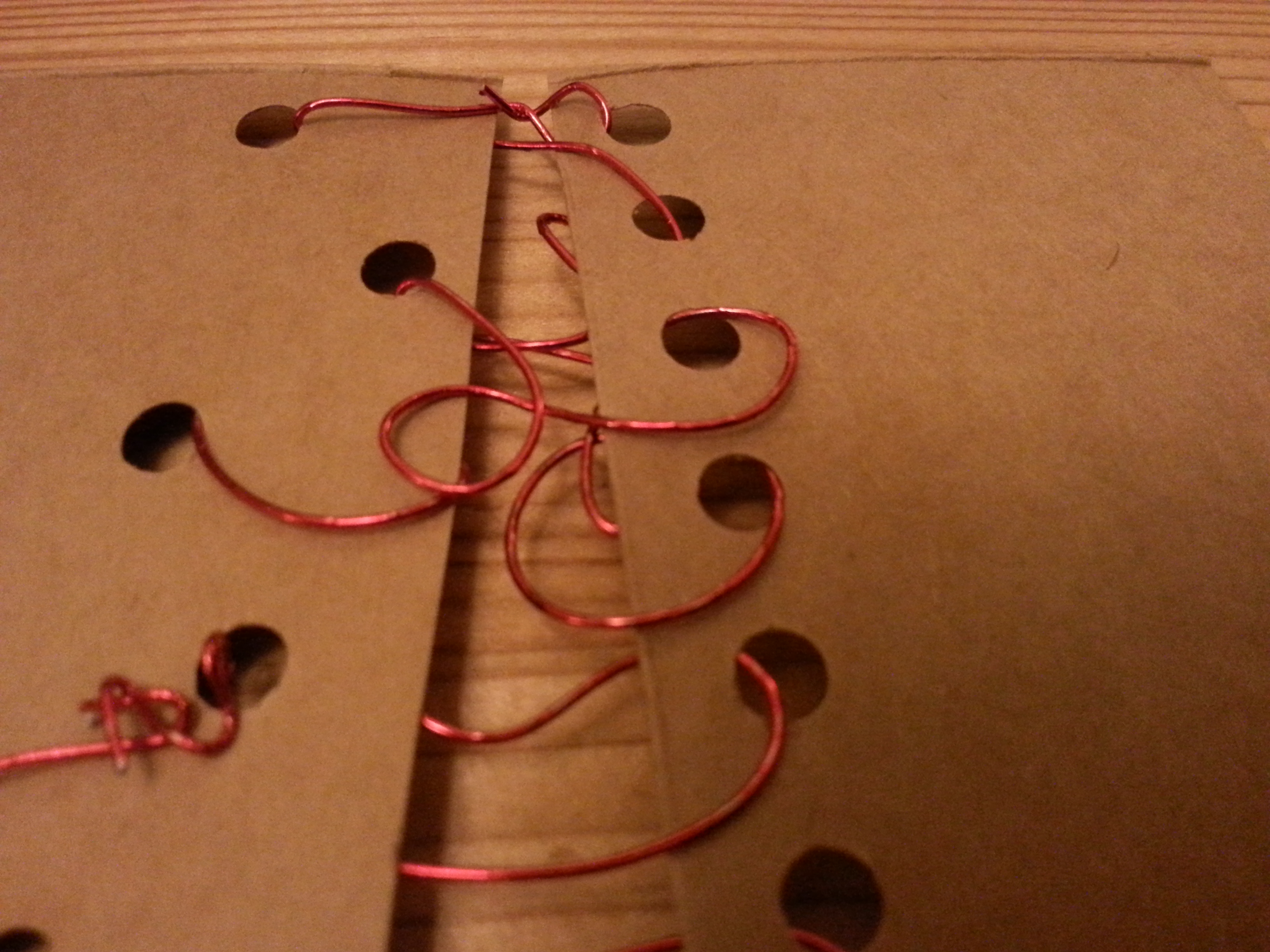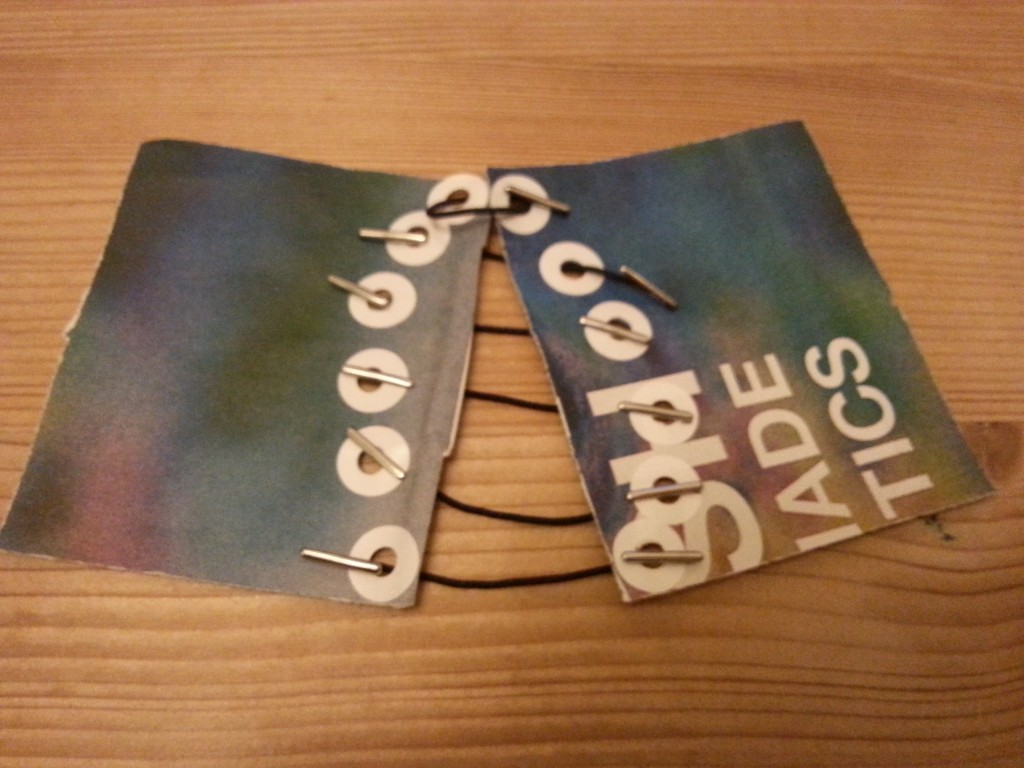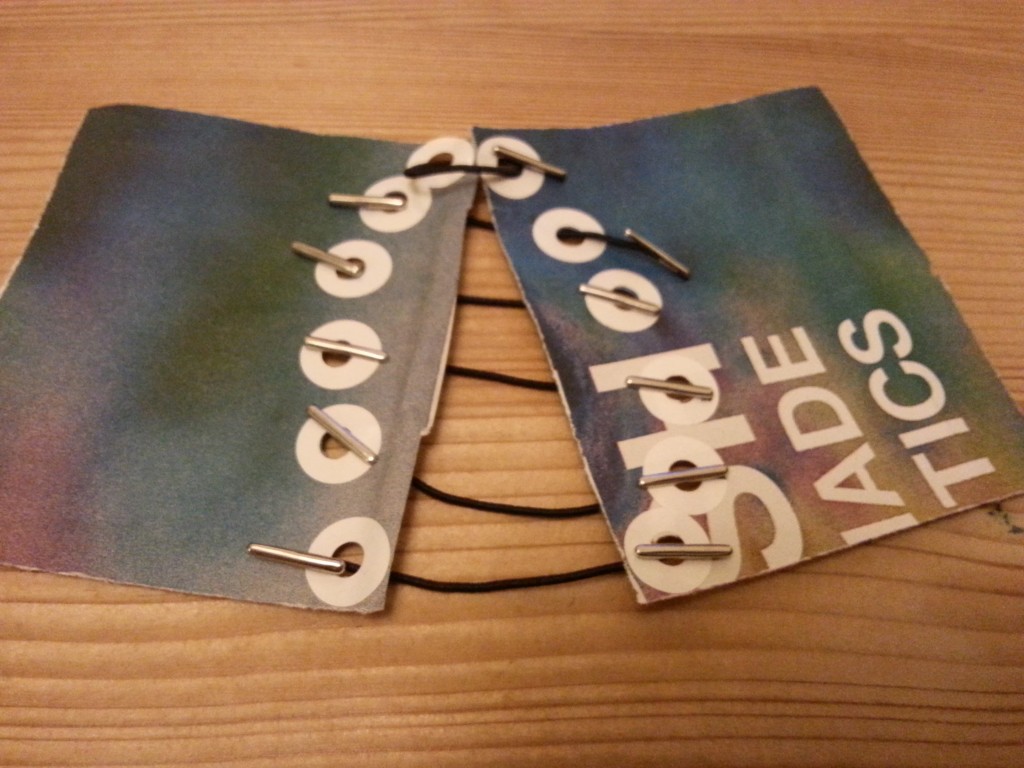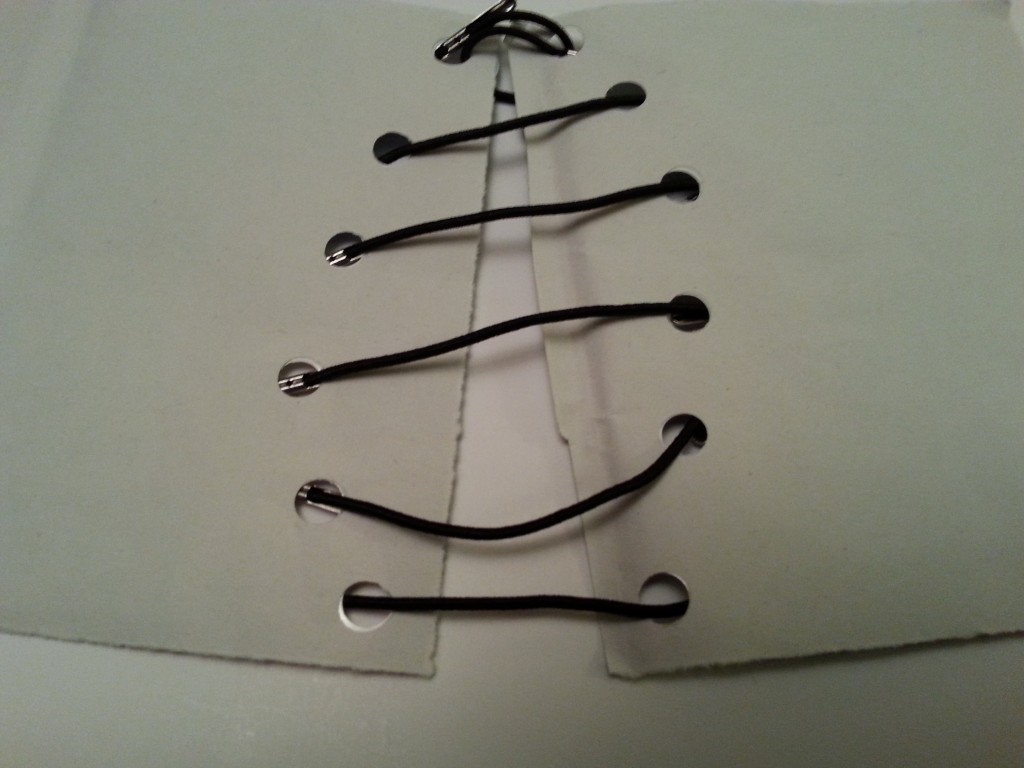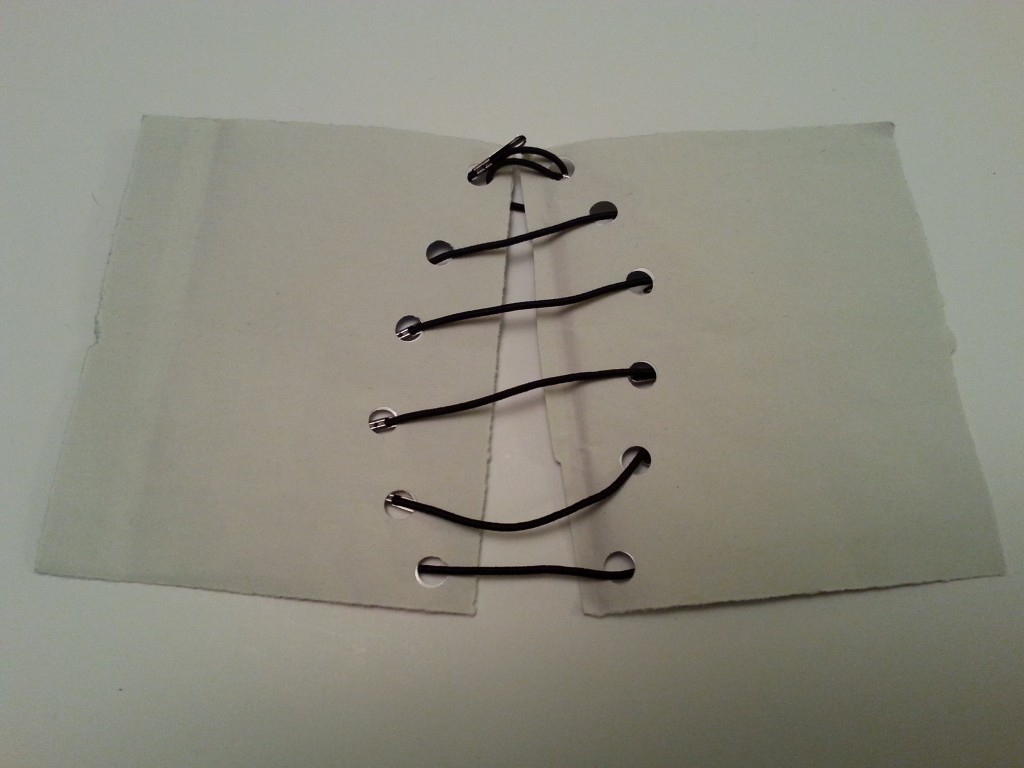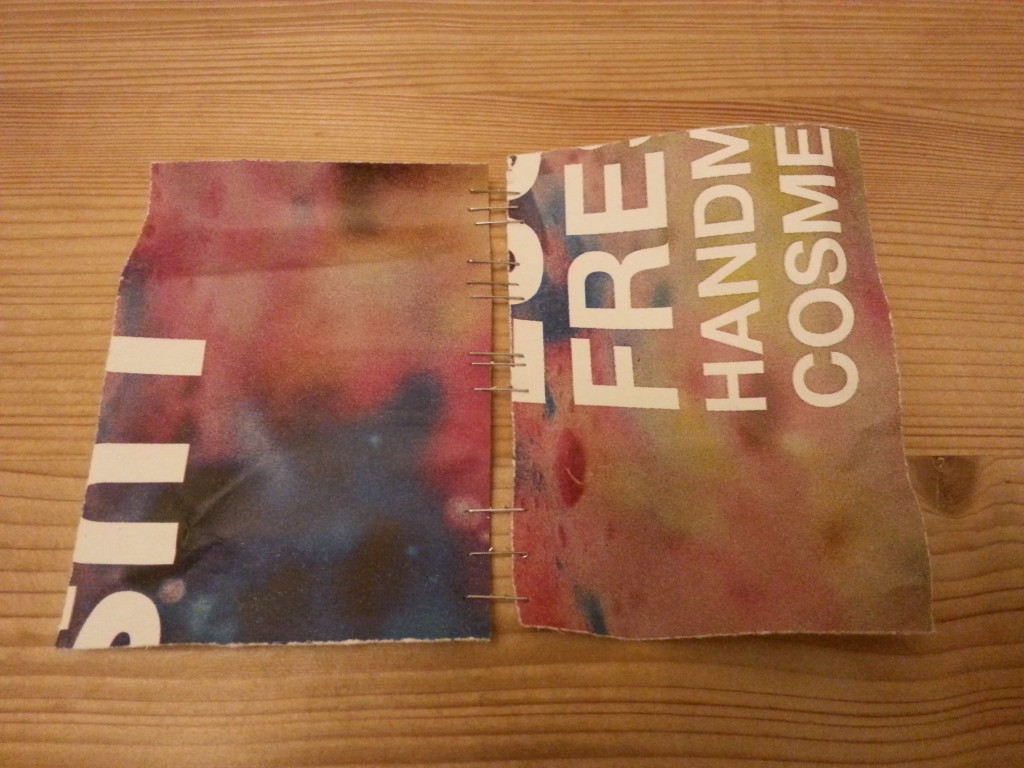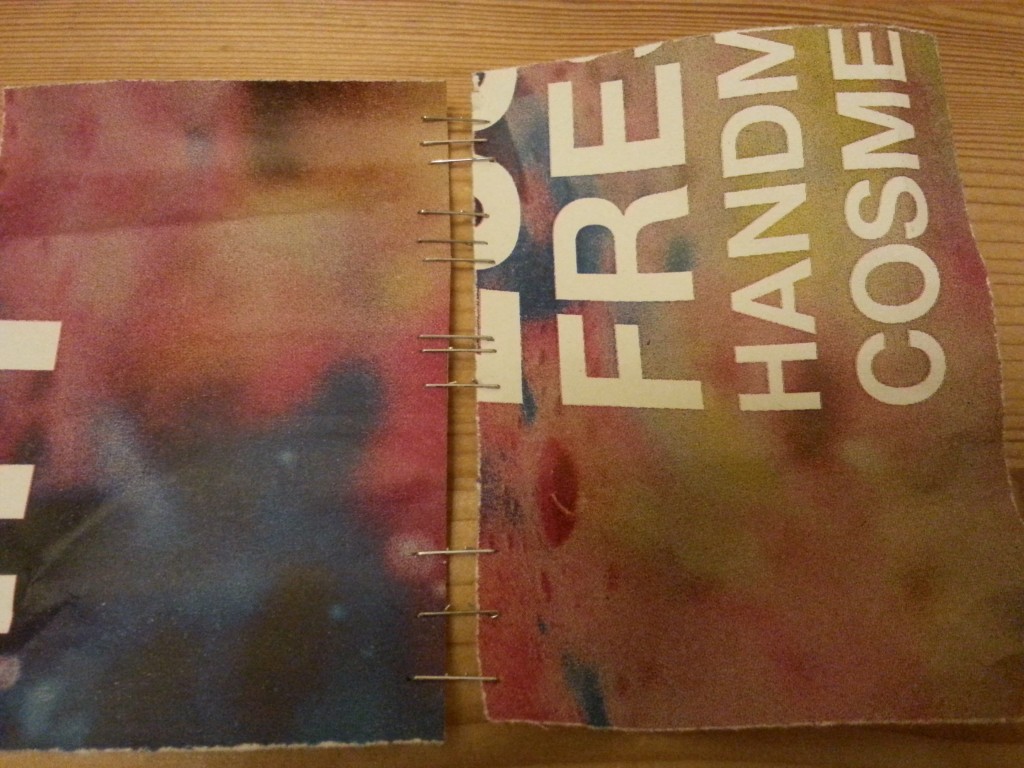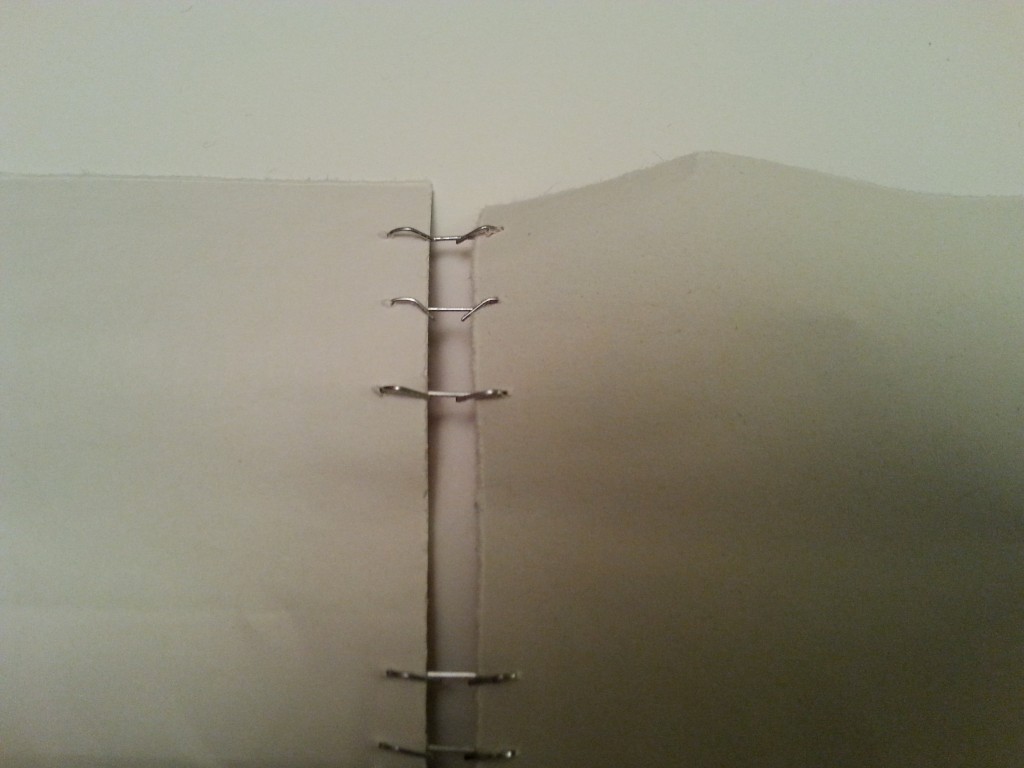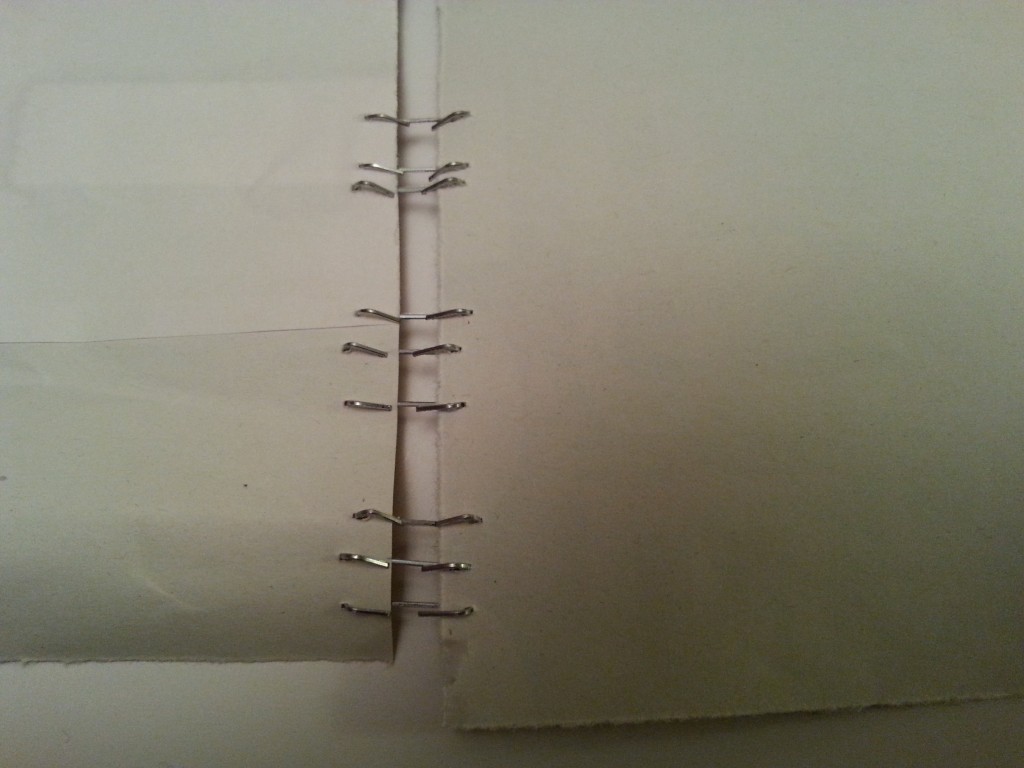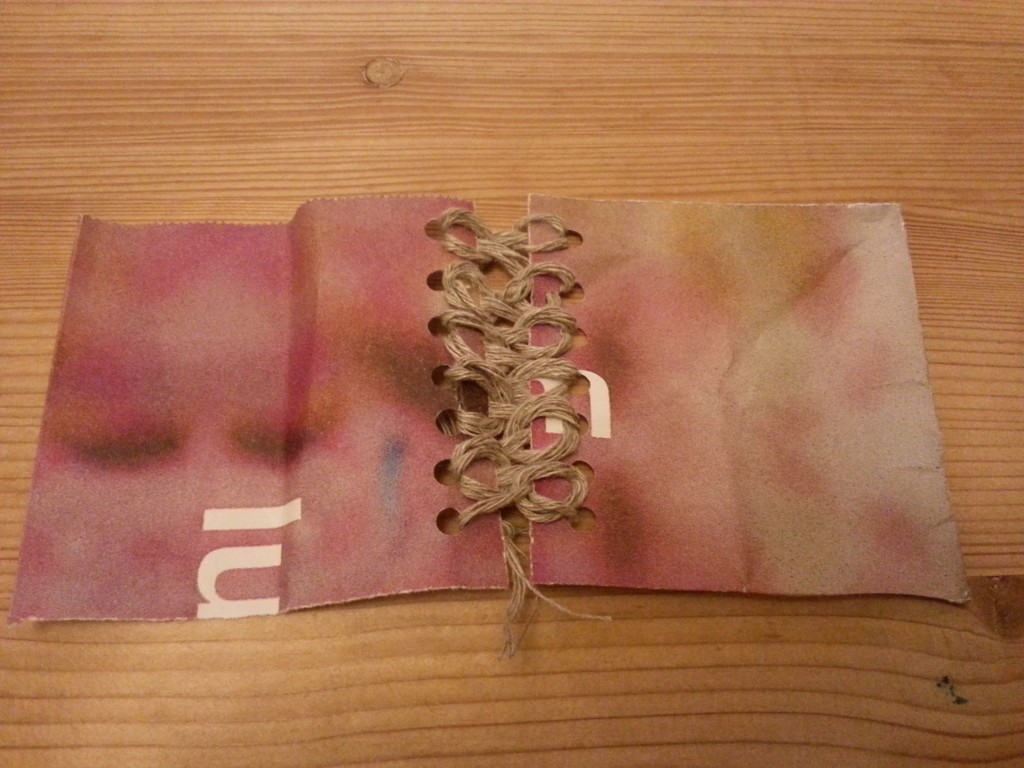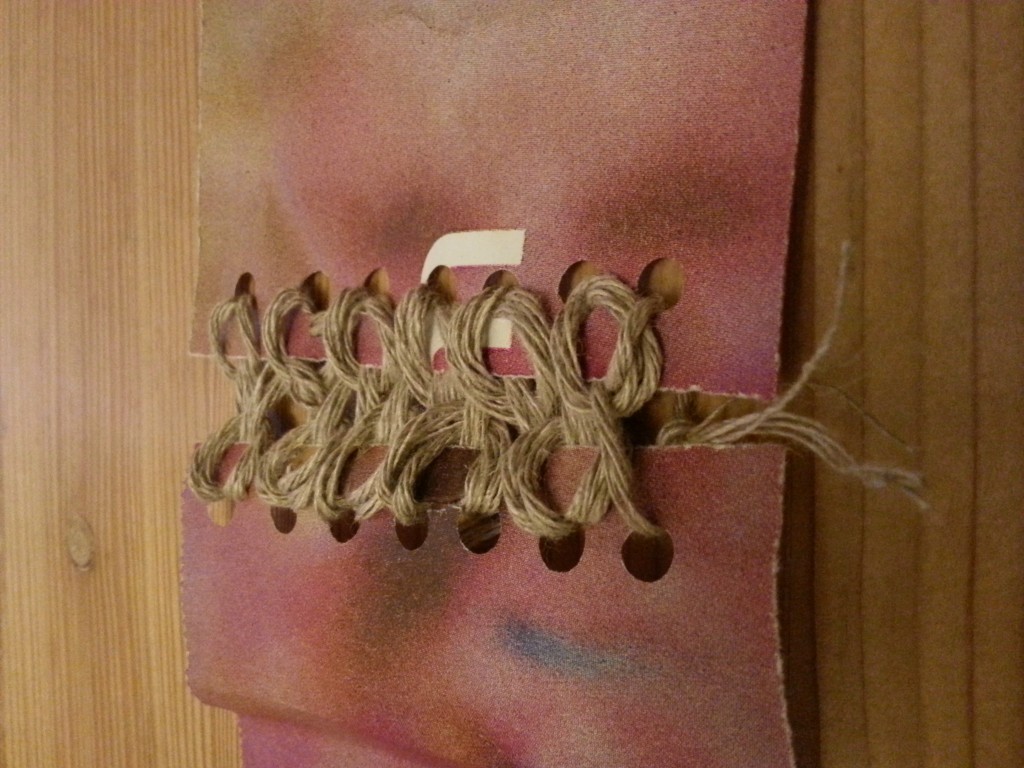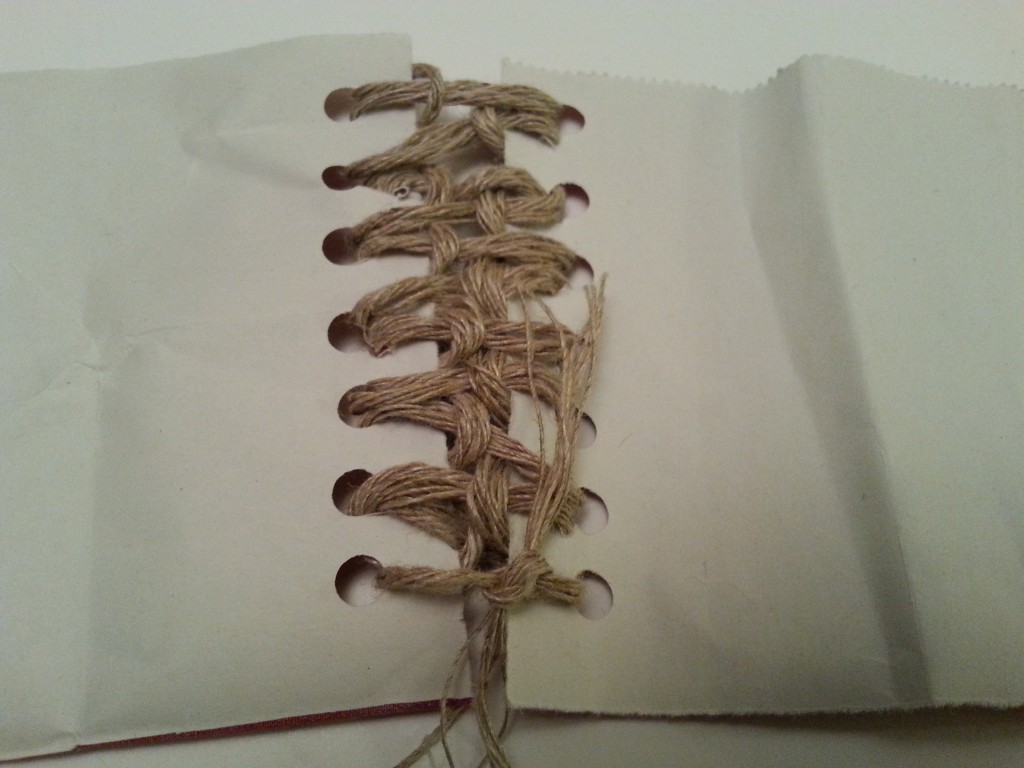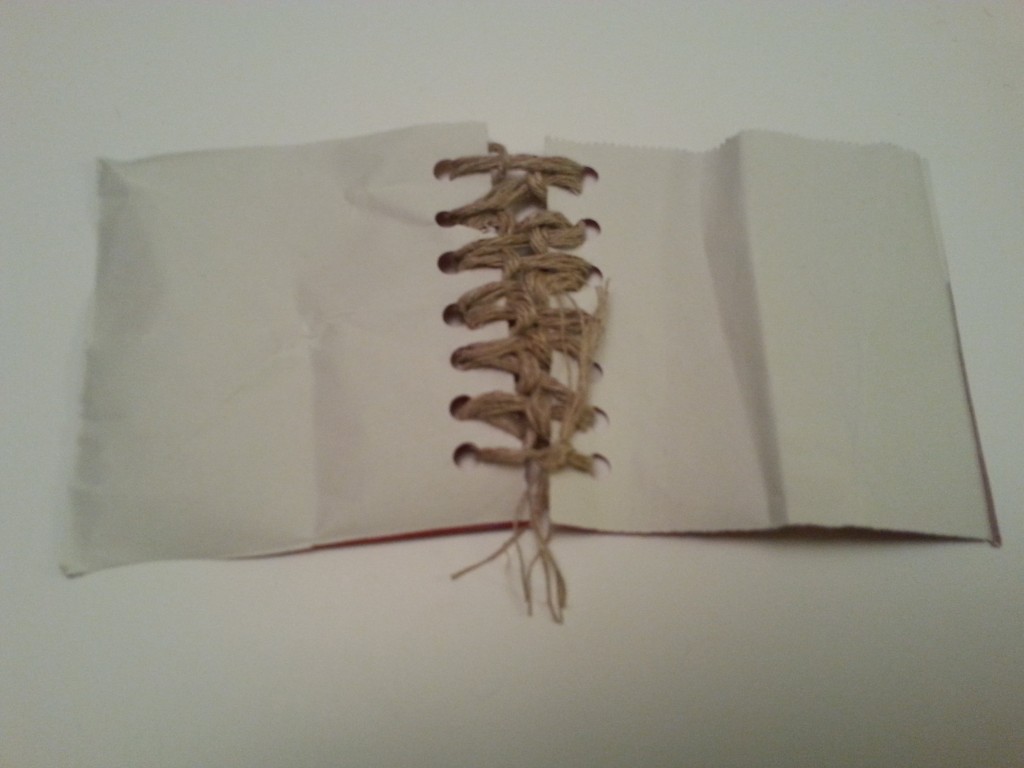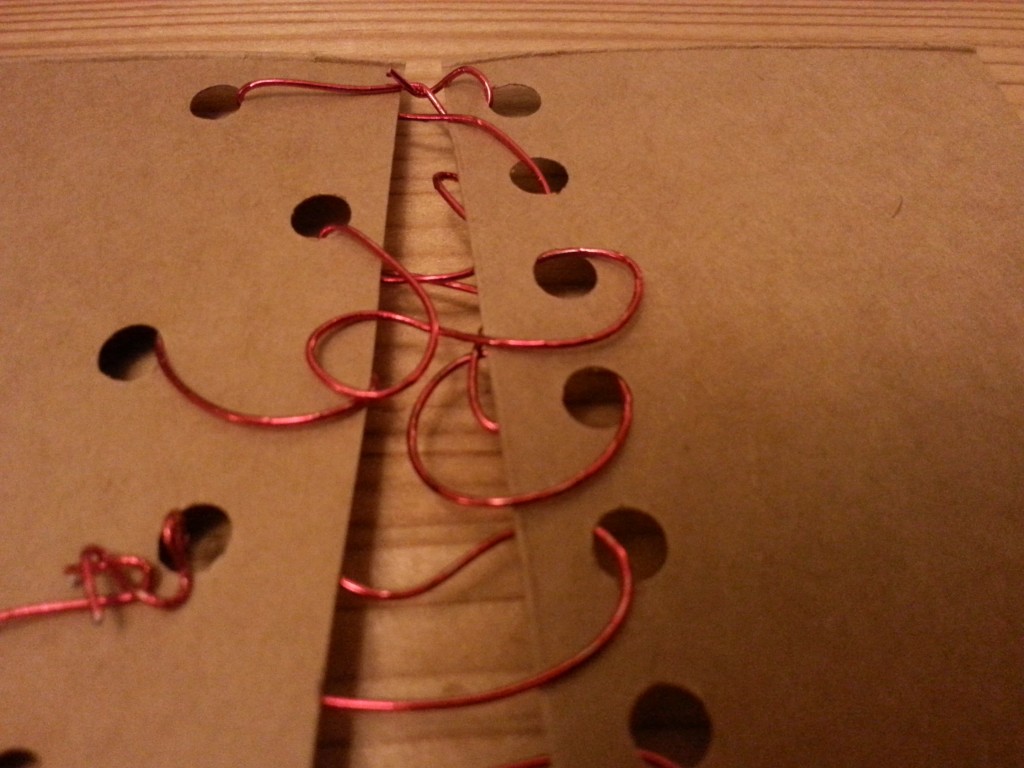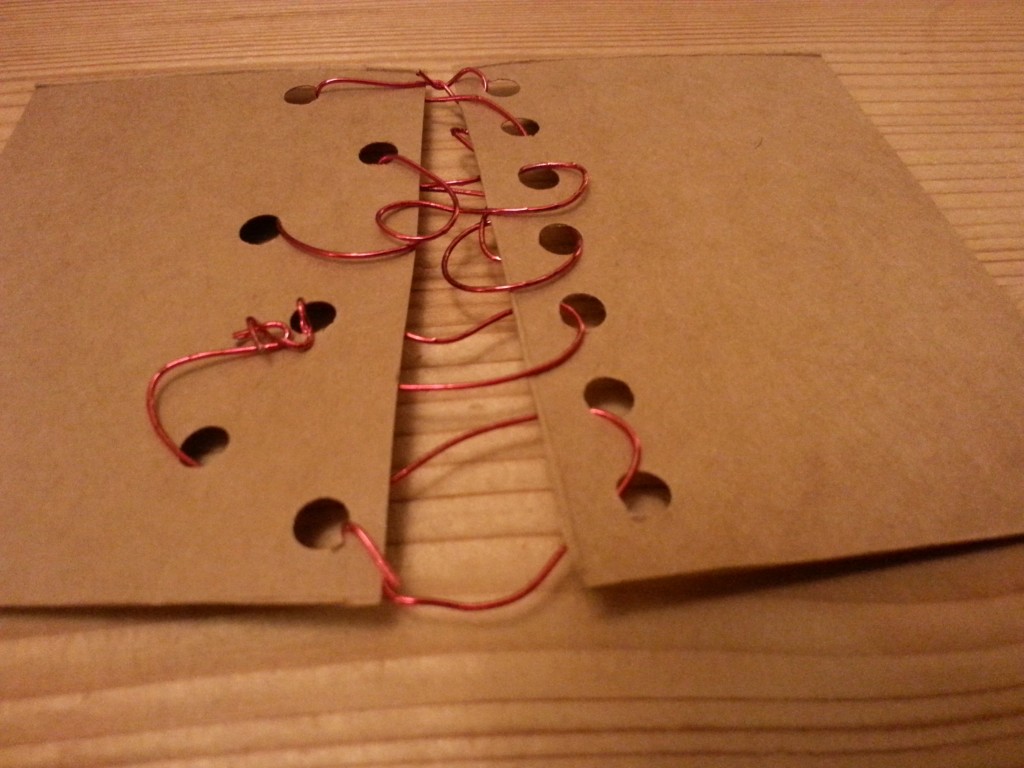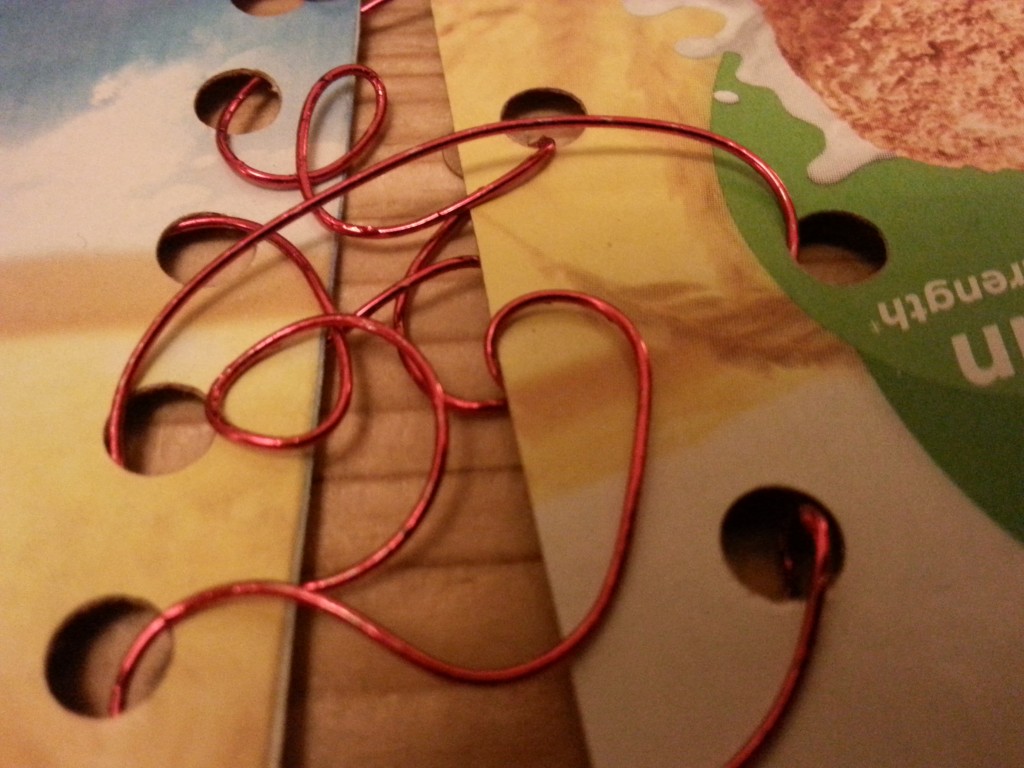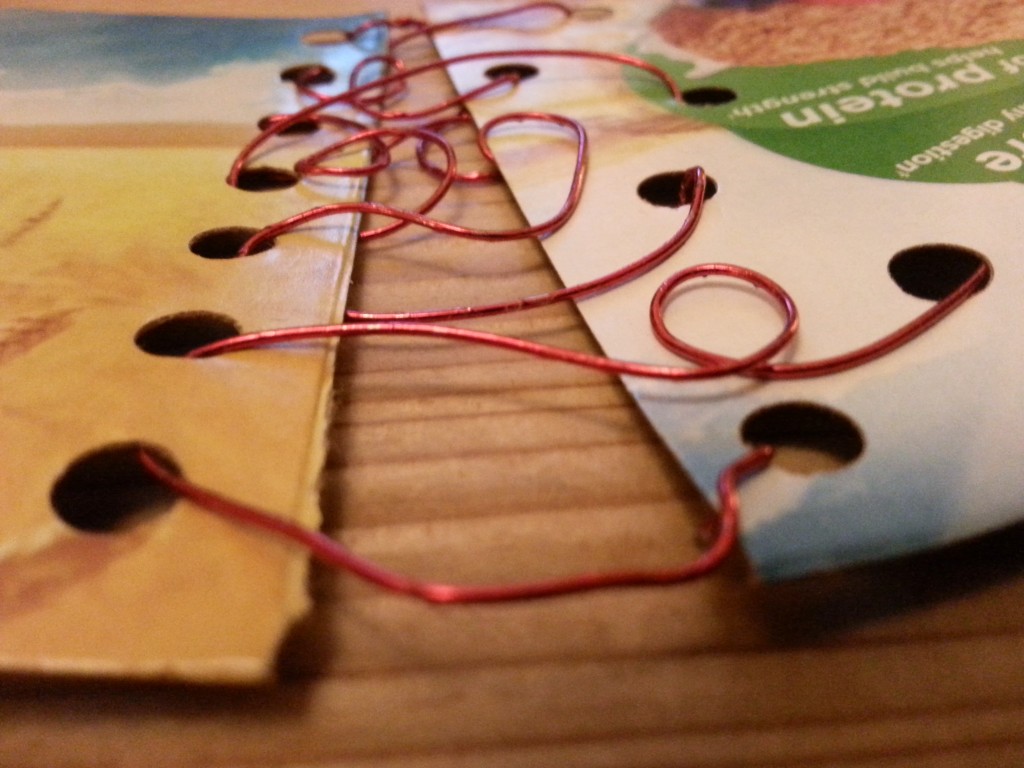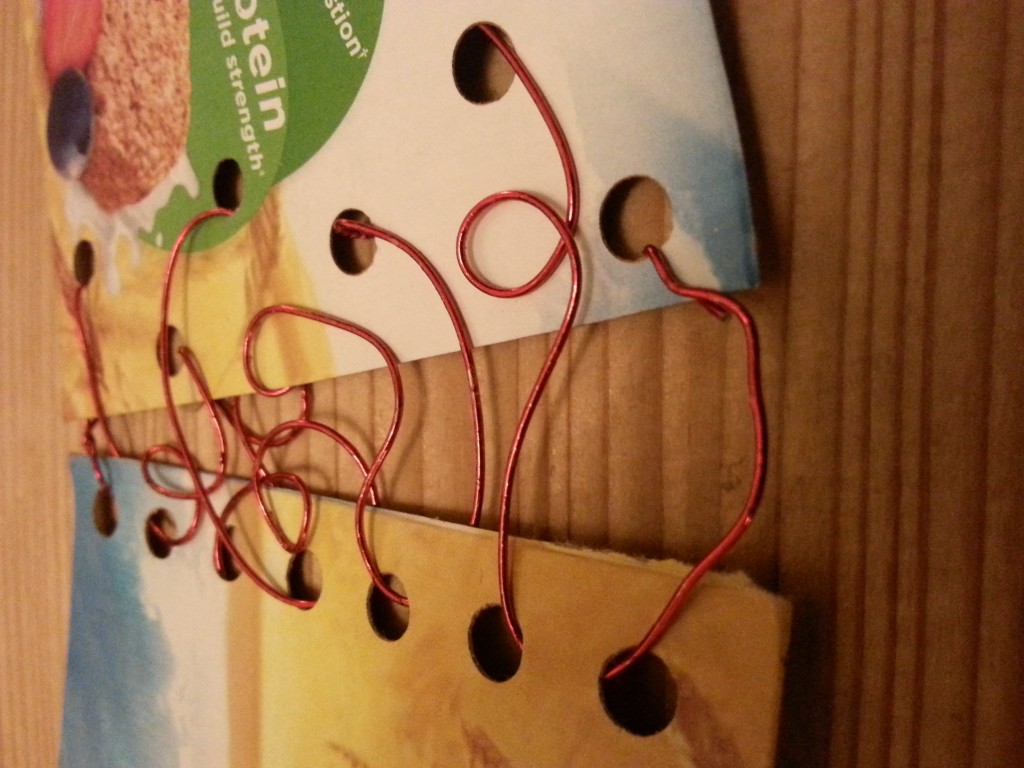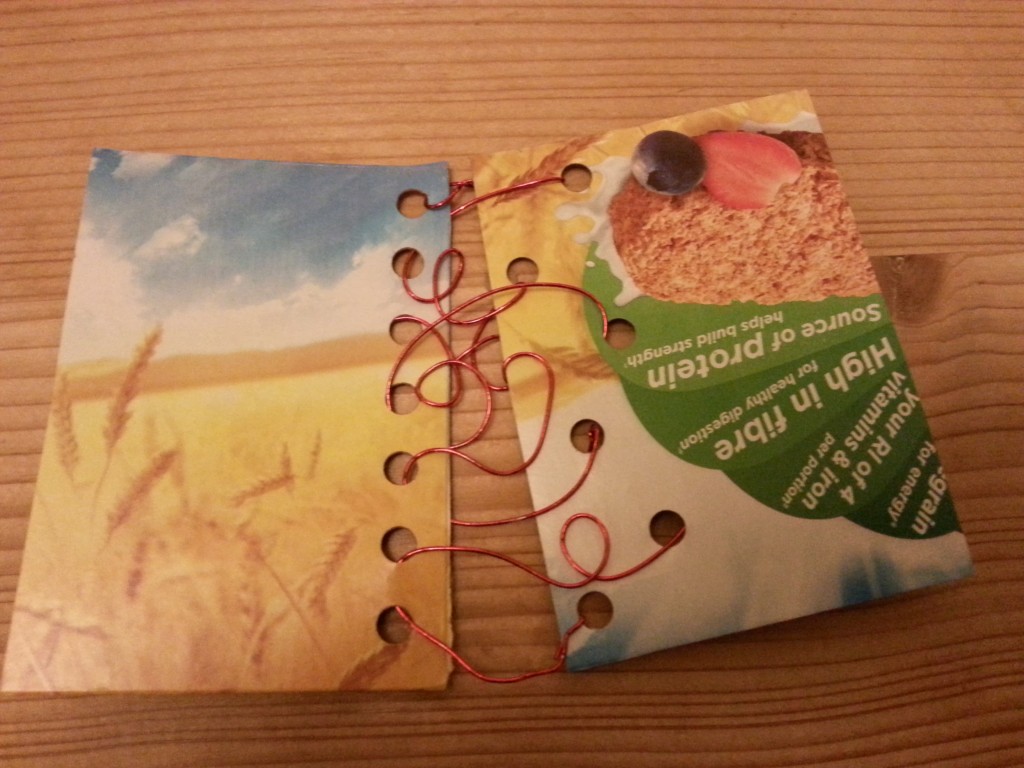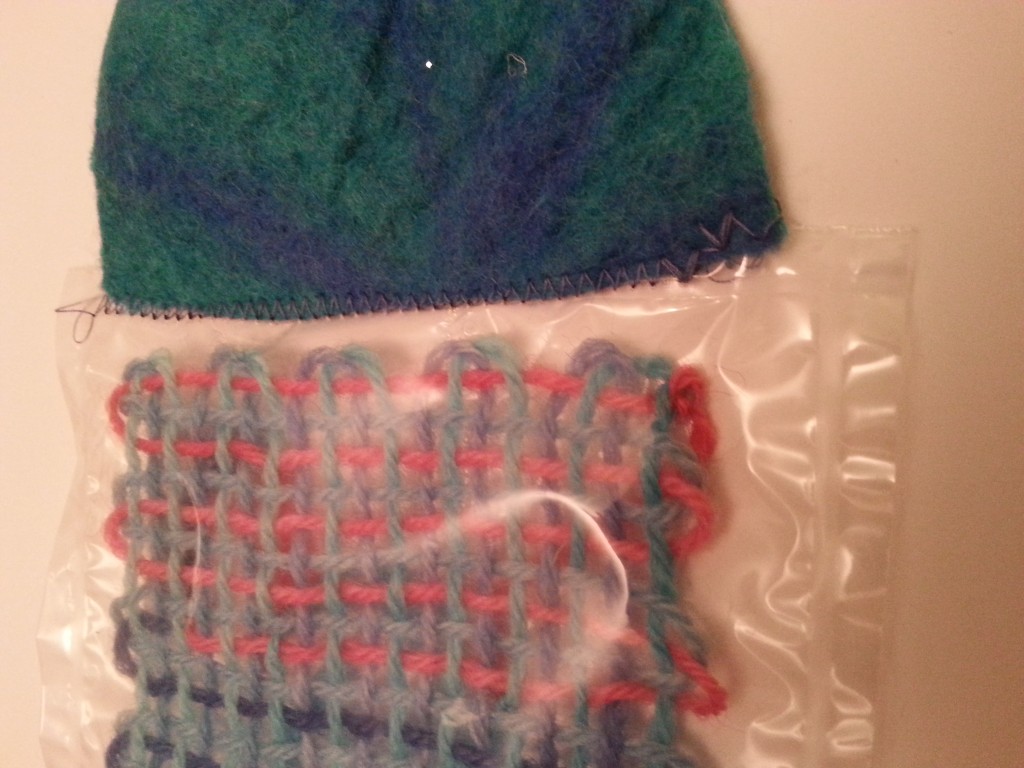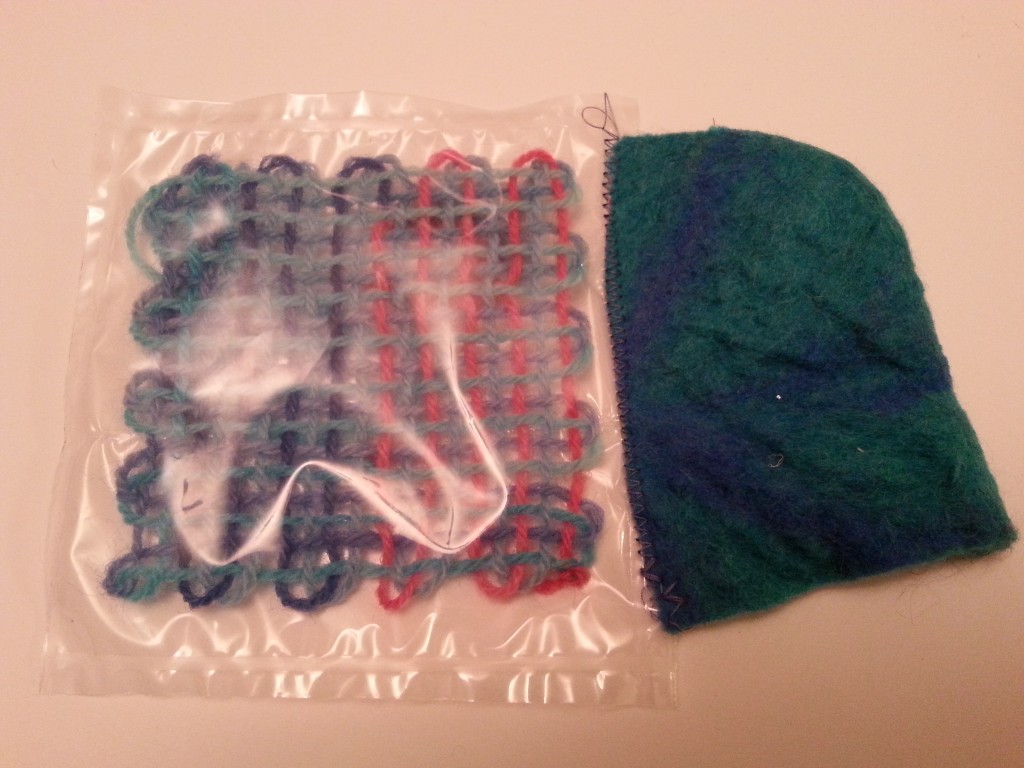For this exercise I worked with a range of media, both for the joining and for the base material.
Paper, eyelets and treasury tags
- Paper and treasury tags
- Paper and treasury tags
- Paper and treasury tags reverse
- Paper and treasury tags reverse
Here I used an old recycled paper gift bag and punched holes at various intervals, shaping the holes into a curved shape. Hole reinforcement stickers were used, both to highlight the join and to provide extra strength for the treasury tags which were threaded through. By adjusting the length of the treasury tags this varied the shape of the gap between the paper. I like the look both of the front and reverse of the bag, exploiting both the pattern and the plain faces.
Paper and staples
- Paper and staples
- Paper and staples
- Paper and staples reverse
- Paper and staples reverse
Using the same paper gift bag, I joined the pieces using a bridge of staples, leaving a consistent gap between the two edges. I varied the distance between the staples to see how this would impact the structure and appearance of the piece. My preferred outcome is the evenly-spaced staples at a distance broadly equivalent to the gap between the paper. I like the symmetry of this arrangement.
Paper bag and twine
- Paper and twine corset-style
- Paper and twine corset-style
- Paper and twine corset-style reverse
- Paper and twine corset-style reverse
My third sample for this exercise uses the same paper gift bag, this time joined with twine. The joining pattern was intended to replicate the criss-crossing effect of lacing – corsetry or shoelacing. The paper wasn’t really strong enough to support the strong twine, however, I can see potential in this technique, perhaps with materials that are more balanced in strength. The twine was also very stiff which had the advantage of giving the piece body, however, I doubt the paper would withstand significant handling or manipulation.
Card and jewellery/electrical wire
- Card and wire reverse
- Card and wire reverse
- Card and wire
- Card and wire
- Card and wire
- Card and wire
This was my favourite example in this exercise. The wire is coloured wire used by jewellers (and electricians!). It has good stability but is malleable enough to twist into interesting shapes that hold. The card has holes punched in a straight line on one side, and randomly placed holes on the other. The wire enables the card to be held in position easily and for shapes to be created between the gaps in the card.
Both sides of the card give an interesting look. I can see a lot of potential for using the wire with a wide range of other pieces – acetate/acrylic, wood, thick card.
Woven sample sealed in plastic with hand-dyed, handmade felt fabric
- Weaving in plastic and felt
- Weaving in plastic and felt
For thi sample I encased a small woven sample made on a weavette loom in plastic, sealing it in place with a heat sealing machine. I then machine-stitched the encased weaving to a piece of handdyed, handmade felt leaving a gap between the two materials in the form of the transparent plastic. Because the woven sample is made from short joins of hand-dyed yarn, this is like joins within joins – the weaving is made of many joins, joined to the plastic which is then joined to the felt. As the felt is handmade, it too is a complex series of fine fibres joined by hand-felting. I like this idea of a multiplicity of joins, blurring the lines between what is joining what and by what means.
